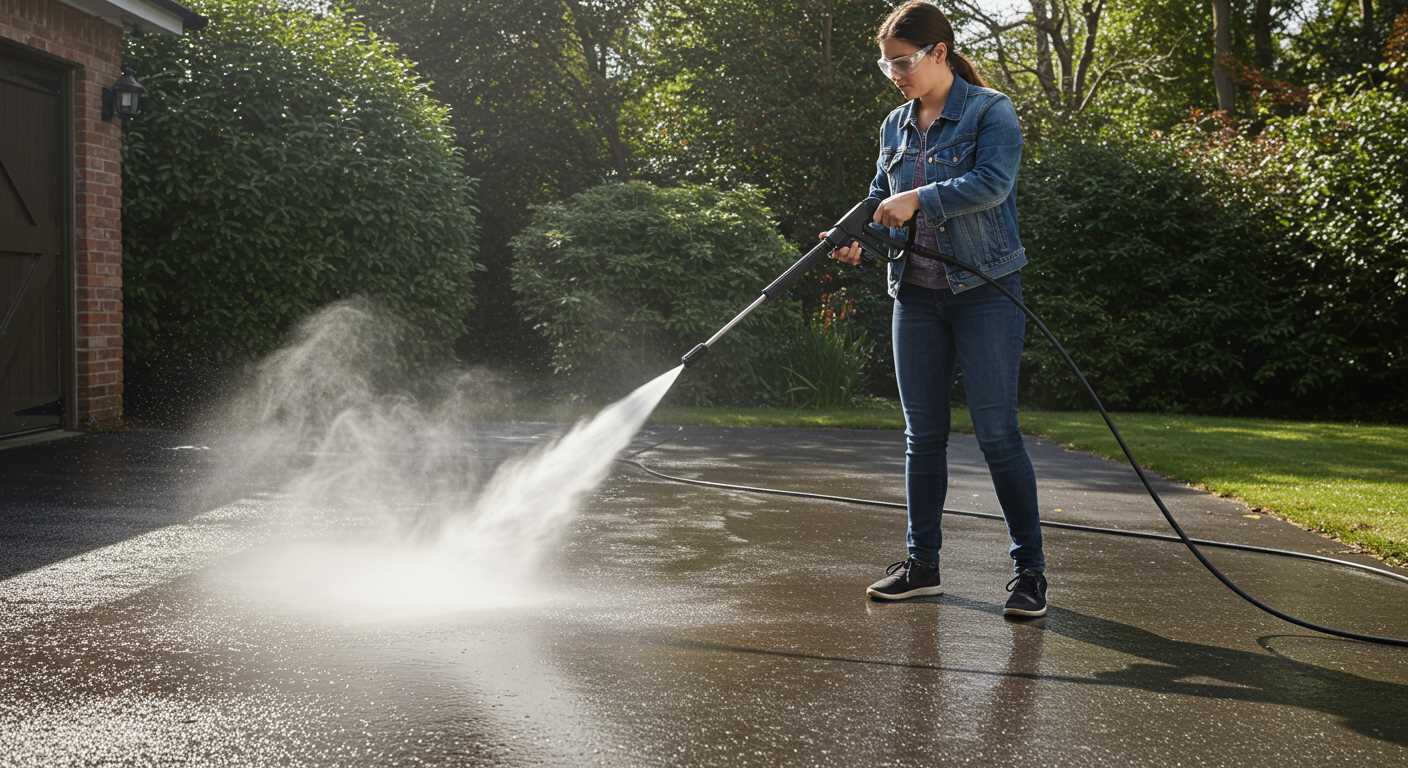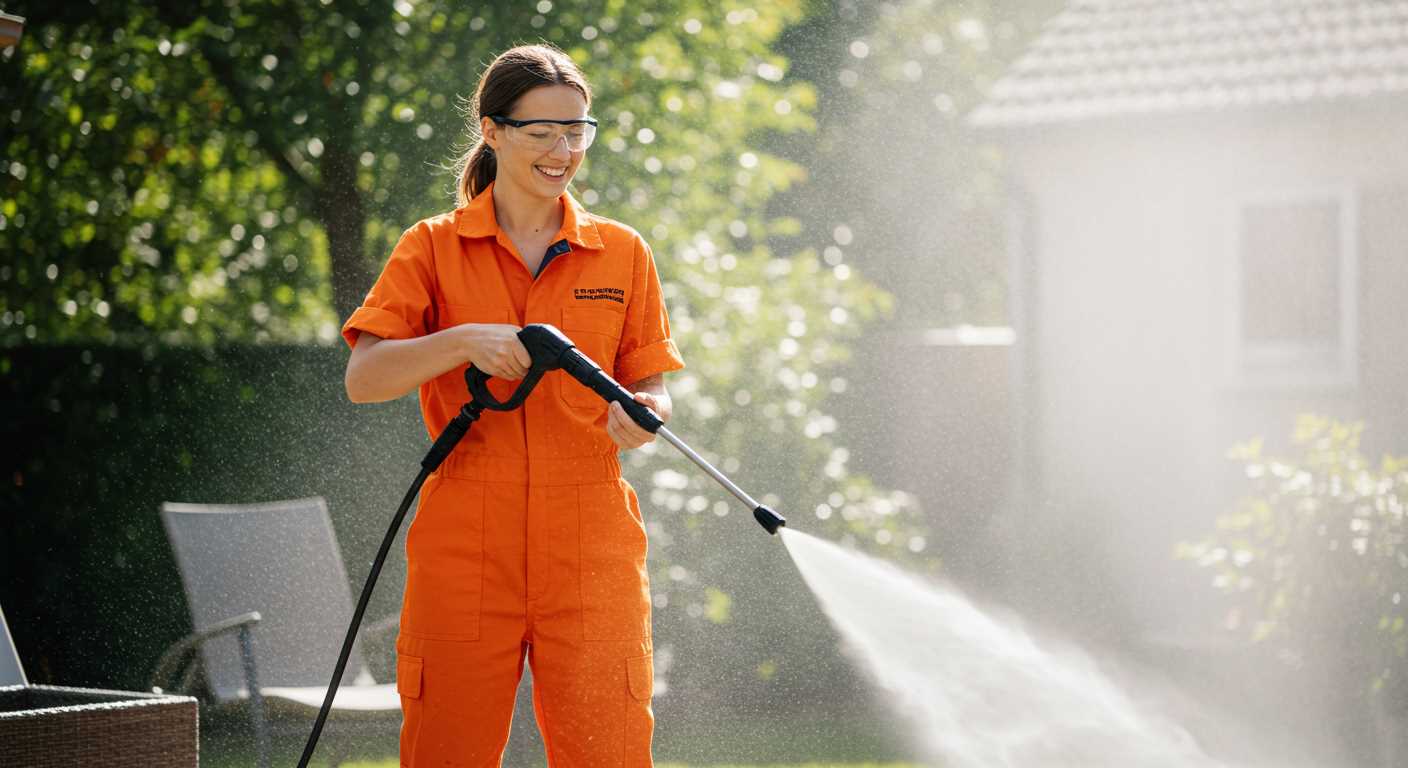

No, introducing heated fluid into your cleaning apparatus isn’t advisable. Most models are specifically designed for cold substances, and utilising hotter fluids can lead to serious damage, affecting the motor and seals. This can void your warranty and result in significant repair costs.
In particular, applying temperatures above the manufacturer’s recommended limits can compromise the integrity of components. Even if your unit appears to handle those conditions temporarily, the long-term effects will likely lead to malfunctions or complete failure. Always refer to the user manual for precise specifications regarding acceptable temperatures.
If you’re aiming to enhance cleaning efficiency, consider using high-quality detergents designed for cold operation. These can significantly boost performance without risking the durability of your equipment. Opting for such safe alternatives will ensure effectiveness while preserving the lifespan of your machine.
Can I Use Hot Water Through My Karcher Pressure Washer?

Definitely not. Standard machines from this brand are not designed to handle elevated temperatures, which may lead to significant damage. Using hotter liquids can compromise seals and hoses, resulting in costly repairs or replacements.
Here are some key points to consider:
- Temperature Limits: Most models are rated for maximum temperatures of around 40°C. Exceeding this threshold can cause malfunction.
- Warranty Concerns: Operating outside manufacturer specifications may void your warranty, leaving you liable for any repairs.
- Cleaning Effectiveness: Cold solutions can effectively tackle grime when paired with appropriate detergents. Hot substances are not necessarily decisive for cleaning efficacy.
- Detergent Compatibility: Many cleansing agents are formulated to work optimally in standard conditions. Altering temperature may affect their performance.
Employ strategic cleaning with traditional liquid to ensure longevity and optimal performance of your equipment. If you require a heated option, consider investing in specialised models designed for that purpose.
Understanding Karcher Pressure Washer Specifications

The efficiency of cleaning machines hinges on their specifications. Each model possesses unique characteristics that dictate its performance. For effective cleaning tasks, looking closely at parameters such as maximum temperature tolerance, pressure output, and flow rate is critical.
Temperature ratings vary significantly among different models. Some machines are engineered for maximum temperatures, enhancing their ability to dissolve tougher grime. This specification is particularly vital for professionals or anyone facing heavy-duty cleaning challenges.
Pressure output is a defining factor for any cleaning device. It’s measured in bar or PSI, indicating the force with which the liquid is expelled. Higher pressure equates to superior performance in applications like vehicle cleaning or removing stubborn stains. Be sure to match your cleaning needs with the appropriate pressure rating of the model.
Flow rate, indicated in litres per minute, determines the volume of the liquid being propelled. A higher flow rate can lead to quicker cleaning. However, ensure that the device’s nozzle is compatible with your requirements to avoid wastage and inefficiency.
Additionally, features like adjustable nozzles and detergent injection systems can enhance versatility. These options allow for tailored applications, making it easier to tackle various surfaces and materials. Always refer to the manufacturer’s manual for accurate usage guidelines and best practices.
In summary, scrutinising specifications is imperative to achieving optimal cleaning results. Each feature plays a role in determining how well the machine performs based on the task at hand.
Potential Damage from Using Hot Water

Operating a cleaning device with elevated temperatures can result in a range of detrimental effects. First, high temperatures may damage internal components, leading to premature wear and malfunction. Seals and gaskets could degrade, potentially causing leaks that compromise efficiency and safety.
Certain models are not engineered for thermal exposure, risking structural integrity. Internal hoses may soften or burst under extreme heat, creating hazardous situations or downtime for repairs. Additionally, excessive heat may affect the effectiveness of detergents, altering their chemical composition and efficacy.
In circuits, overheating can lead to failures in electrical components, risking a complete breakdown. This is why it’s vital to consult the specifications before any attempt to employ heated liquids. Always refer to the manufacturer’s guidelines and recommend a maximum temperature limit to avoid costly mishaps.
Lastly, high temperatures can impact the user experience, resulting in discomfort or injury during operation. Maintaining optimal conditions ensures both safety and durability, while protecting your investment in the equipment.
Temperature Limits for Karcher Models
The maximum temperature recommended for models typically falls within the range of 60°C to 80°C. Exceeding this threshold can compromise performance and longevity. Each model has distinct specifications, so it’s prudent to consult the user manual specific to your unit for precise parameters.
Model-Specific Insights

<p.For the K5 series, the ideal temperature is capped at 60°C, which allows effective cleaning without risk. The K7 series, on the other hand, can handle temperatures up to 80°C. Always ensure that any adjustments align with manufacturer guidelines.
Implications of Exceeding Limits
Utilising temperatures beyond the recommended limits may result in damage to internal components, decreased warranty coverage, and potential safety hazards. Regular maintenance checks can help mitigate risks associated with higher temperatures, ensuring optimal functioning.
Recommended Hot Water Usage Practices
Always check the manufacturer’s guidelines specific to your model before attempting to introduce elevated temperatures. Maintaining the correct temperature range can enhance cleaning efficiency while safeguarding device integrity.
Utilise water below the manufacturer-specified maximum threshold to prevent damage. Aim for settings that leverage warmth for greasy residues without exceeding the functional limits described in the product manual.
Consider pre-mixing detergents that thrive in elevated thermal conditions. Follow the recommendations on the labels to ensure compatibility, as some cleaning agents may react adversely when subjected to high temperatures.
Regularly inspect and maintain connectors and seals for any degradation. Heat can exacerbate wear, so ensure all parts are in good condition to prevent leaks and malfunction during operation.
After every session, allow the equipment to cool down properly. This practice promotes longevity and minimises the risk of thermal damage to internal components and hoses.
Finally, evaluate the cleanliness and condition of components like nozzles and filters. Frequent use of increased temperatures can lead to buildup, necessitating regular cleaning for optimal performance.
Alternatives to Cleaning with Increased Temperature

Lukewarm solutions offer a viable approach to tackling dirt and grime on surfaces without risking equipment integrity. Leveraging specific cleaning agents alongside moderate temperatures can enhance results significantly.
- Detergents: Applying quality detergents designed for typical cleaning tasks amplifies efficacy. Look for formulations dedicated to your specific cleaning requirements such as oils, grease, or mould.
- Brushes: Physical scrubbing with suitable brushes can assist in loosening stubborn debris. Select brushes made from durable materials that match the surface being cleaned.
- Biodegradable Solutions: Opting for environmentally friendly cleaning agents not only ensures safety for surrounding flora and fauna but can also improve the cleaning process without high temperatures.
- Mechanical Tools: Integrating additional equipment like scrubbers or surface cleaners enhances precision and efficiency during cleaning tasks.
- Extended Soaking: Allowing surfaces to soak with detergent solutions for an extended period prior to rinsing can greatly improve cleanliness, especially on porous materials.
Consider these methods to optimise cleaning efforts while ensuring equipment longevity. Careful selection of tools and products guarantees better maintenance outcomes without compromising functionality. Always follow manufacturer instructions for the best results.
Customer Experiences and Expert Opinions
Many users report mixed outcomes when incorporating elevated temperatures in their Kärcher units. While certain models are designed for higher thermal tolerances, feedback often highlights issues with reduced lifespan and performance inconsistencies. It’s essential to refer to the manufacturer’s specifications before proceeding with anything beyond standard temperatures.
Satisfied customers sharing their insights emphasize the importance of following guidelines. They note that successful cleaning results stem from adhering to the specified limits, optimising detergent choice, and adjusting nozzles appropriately. This not only enhances cleaning efficiency but also safeguards equipment integrity.
From my experience, regular maintenance post-use, especially after any applications involving increased temperatures, is pivotal. Residue build-up can lead to malfunction and costlier repairs if ignored. Routine checks of hoses and nozzles can prevent most complications associated with improper thermal management.
| Model | Maximum Temperature (°C) | Customer Feedback |
|---|---|---|
| K2 Classic | 40 | Great for light cleaning, but struggles with persistent grime. |
| K4 Full Control | 60 | Works well with recommended heat, impressive results. |
| K5 Premium Full Control | 60 | Users report versatility, better suited for tougher tasks. |
Experts advise always prioritising safety. Observing maximum temperature ratings not only extends equipment longevity but also guarantees optimal cleaning effectiveness. In my consultancy role, I frequently addressed claims regarding thermal damage, and users maintained that following advisory limits significantly mitigated risk. Investing in a model built for higher temperatures could be a wise decision if high-performance cleaning is frequently required.
In discussions with other professionals, a consensus emerged regarding alternatives for harsh cleaning needs. Using chemical solutions designed for cold applications or exploring steam cleaning systems can provide sufficient results without the risks associated with elevated temperatures. Users experienced good success with these methods, enhancing cleaning without compromising their tools.
FAQ:
Can I use hot water with my Karcher pressure washer?
Hot water can be used with certain Karcher pressure washers, but it heavily depends on the specific model you own. Some models are designed to work with hot water and can effectively handle temperatures up to 60 degrees Celsius. However, using hot water in models that are not rated for it can cause damage to internal components and void the warranty. Always consult your user manual or contact Karcher customer service for clarification on your specific model’s capabilities before attempting to use hot water.
What are the benefits of using hot water in a pressure washer?
Using hot water in a pressure washer can significantly enhance cleaning efficiency. Hot water helps to break down grease and oil more effectively compared to cold water, making it ideal for cleaning vehicles, driveways, and industrial equipment with stubborn stains. Additionally, hot water can reduce the need for harsh chemicals, as the heat itself aids in lifting dirt and grime. However, it’s crucial to ensure that your pressure washer is designed for hot water use to avoid any potential harm.
Is it safe to use a Karcher pressure washer with hot water if it’s not designed for it?
No, it is not safe to use a Karcher pressure washer with hot water if it is not specifically designed for such use. Doing so can lead to various issues, including damage to seals, hoses, and the pump itself. This misuse could result in costly repairs and may void your warranty. To ensure safe operation and longevity of your pressure washer, it’s best to adhere to the manufacturer’s guidelines regarding water temperature.








